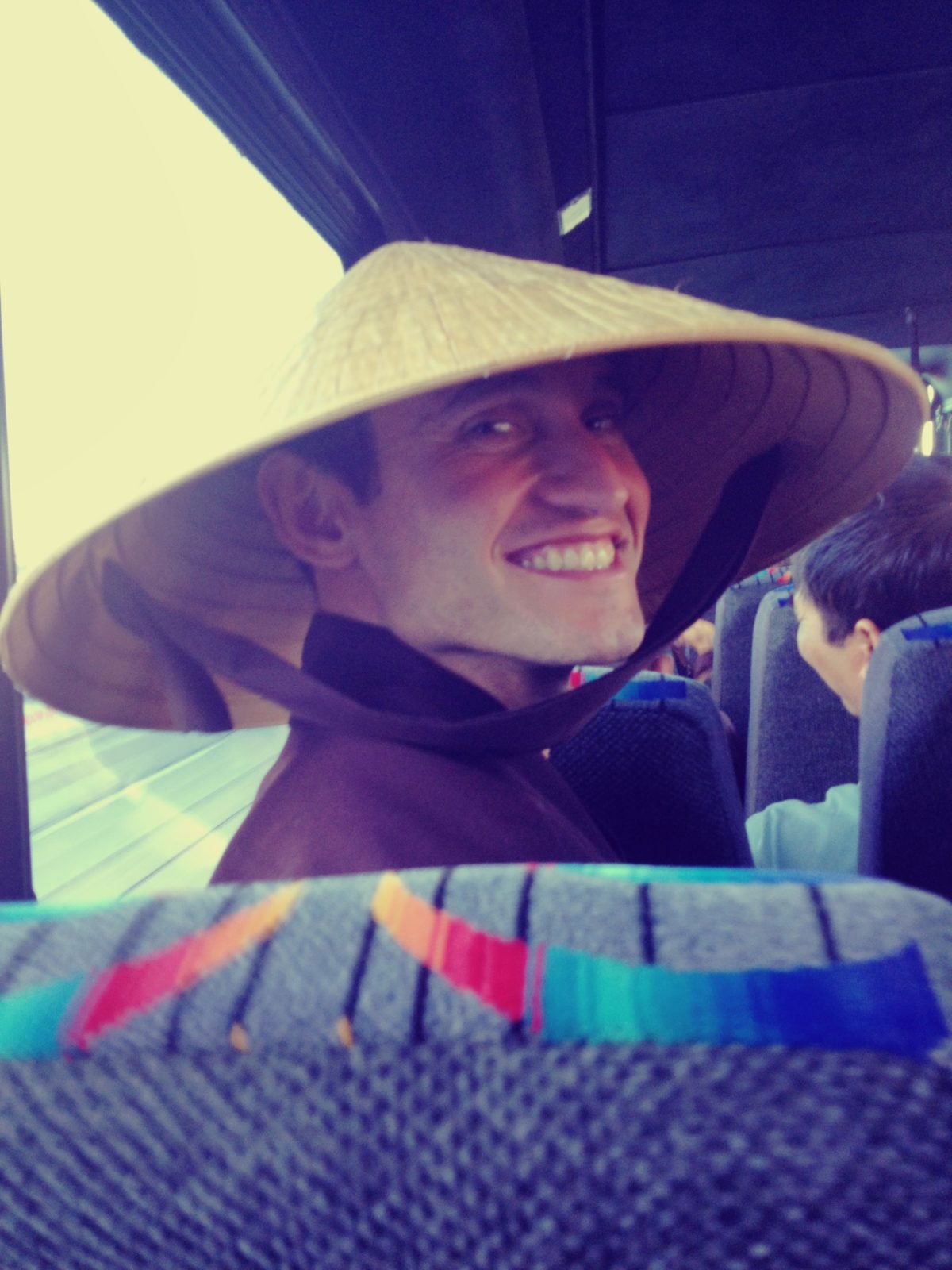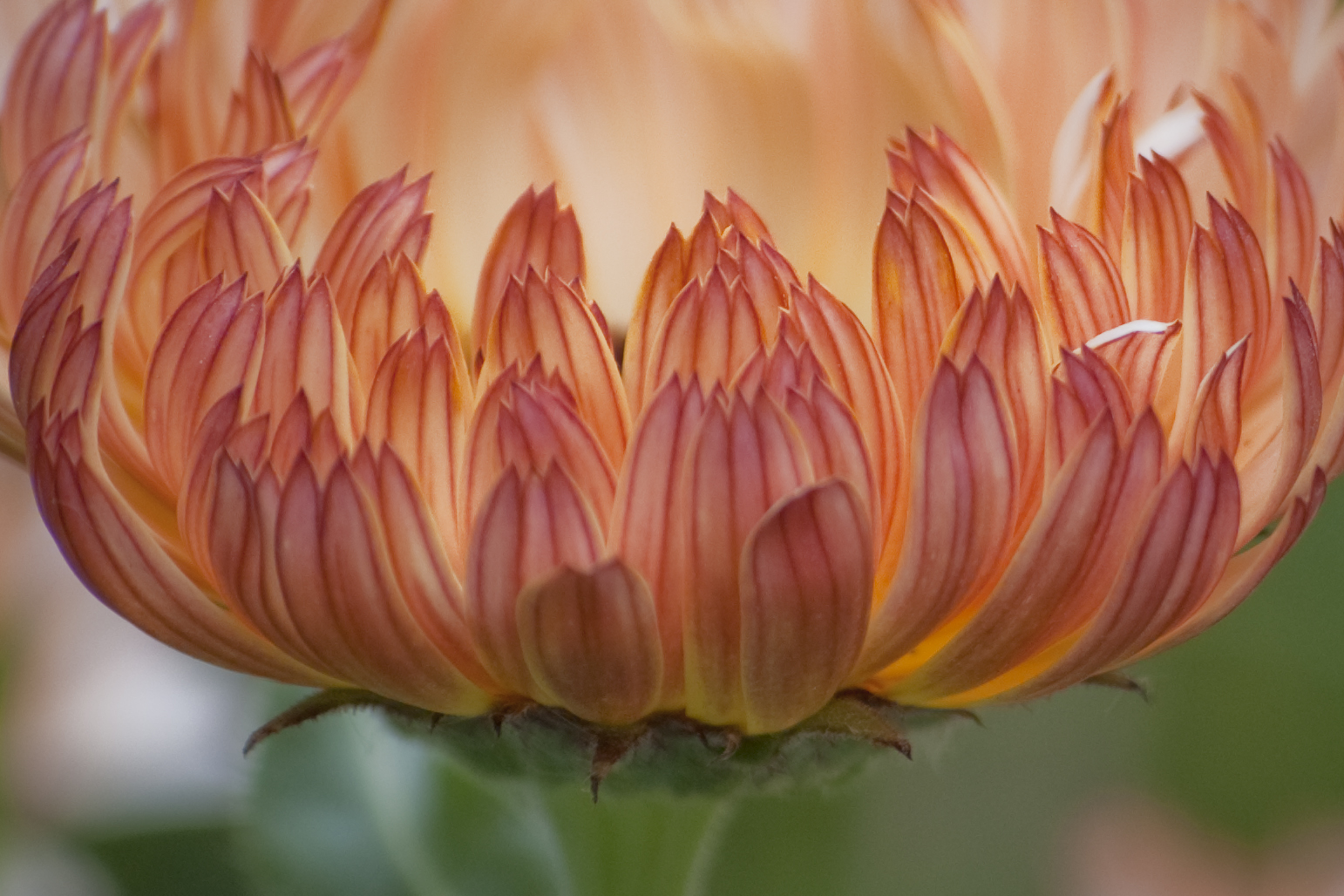By Dave Kenneally

I have been practicing in Thich Nhat Hanh’s tradition for eight years and living at Blue Cliff Monastery in upstate NewYork since November of 2012. I am the inaugural intern in a one-year program for laypeople who want a longer and more intensive retreat at the monastery. My position is called “Sangha Outreach,” and I work to keep the monastery connected to lay practitioners all over the world.
By Dave Kenneally

I have been practicing in Thich Nhat Hanh’s tradition for eight years and living at Blue Cliff Monastery in upstate NewYork since November of 2012. I am the inaugural intern in a one-year program for laypeople who want a longer and more intensive retreat at the monastery. My position is called “Sangha Outreach,” and I work to keep the monastery connected to lay practitioners all over the world. Last summer I was invited to join Thay and about one hundred monks and nuns on their biennial tour of North America. At one stop on the tour, Thay recounted a dream he had about twenty years ago. (Full disclosure: I’m going to leave out some fascinating parts; this is the dream life of a Zen Master, after all.)
Thay dreamt he was still in university, in his body as a young man. The school secretary informed him that he had been admitted into a very selective honors course that was starting immediately. Thay hurried up the stairs, thrilled because this course was taught by a highly renowned and much-loved professor. When Thay walked into the classroom he was startled by what he saw. Rather than the small room with just a few students that he was expecting, he saw thousands of students in the grandest of halls. The windows all around him framed the impossibly beautiful view of snow-capped mountains, the sun, moon, and stars. While they waited for the esteemed instructor, Thay asked what the subject of the class would be, as he had neglected to ask the secretary in his excitement. “Music, of course,” was his classmates’ response. They went on to tell him that he would be giving the first presentation as soon as the teacher arrived. Music? Thay was not a student of music! He felt very embarrassed and was not sure how he could possibly give a presentation on the subject. In his nervousness, Thay fumbled around in his pockets, as if something hidden there could save the situation. Sure enough, he found a small meditation bell. Thay had been using the bell to bring himself and others back to the present moment since he ordained as a novice monk. He had been studying a musical instrument after all! With this realization, all of Thay’s confidence came flooding back, and just as the instructor was about to walk in, Thay woke up.
For me, the standout detail in the dream is the symbol of the bell. The bell is at the center of our mindfulness practice. Its sound is often referred to as the voice of the Buddha, and listening deeply to it has the power to bring us back to ourselves, back to our true home. Thich Nhat Hanh is a bell. The depth of his mindfulness ensures that his sound is very beautiful and pure. It radiates in a way that penetrates everyone and everything around him. I could feel how all of us on the tour were harmonizing ourselves to the sound of Thay’s practice. Not just trying to mimic it, but using it to gently guide us back to the sound of our own lives. Only in that place of deep and compassionate listening do we have a chance to realign with our deepest intentions. I felt powerfully embraced by the collective energy of thousands of people practicing like this during the tour. The safety and support of it enabled me to listen more closely to the sound of my own bell than I ever have. I was able to hear both its burgeoning harmonies and its lingering discords. This process made the three-month tour simultaneously very joyful and quite painful. Thay spoke again and again about the inseparable nature of happiness and suffering. He instructed us to learn how to “suffer well, so that we can suffer much less.” But what does that really mean?
Twenty years ago, while Thay was visiting nirvana in his dreams, I was a newly minted United States Marine, waking at dawn every morning to run with my platoon. We ran behind our commanding officer, following his pace and his silently chosen route each day. Some days it was three miles on the road, others it was five miles over hill and dale. The pain of not knowing was a practiced torture, meant to bend the iron wills of a hundred young men to an idea of discipline. Among the toughest ores ever to be pulled across that anvil was my childhood best friend, Christian Regenhard. Early on in our training, he started running alone at night. After watching him return home from another punishing session through the hills that surrounded our barracks, I asked him what he was doing. Wasn’t it enough to be dragged around the base each morning? He answered plainly and without hesitation, saying that he couldn’t take the pain of those morning runs. He shared openly, without shame, that he couldn’t bear starting every day at the mercy of another man’s whim. He had decided to train himself hard enough at night to bravely face even the worst of our morning circuits. When the sun rose, Christian was ready and could greet it with a smile. By embracing his vulnerability, he saw that happiness lay in training himself to be with his suffering, so that he could suffer less.
Like anyone, I know the seemingly senseless suffering that any given morning can bring. I remember and carry the pain of many such mornings. The grey day in childhood that I realized my father was an alcoholic. The spring morning of young adulthood, when my brother told me over the phone that our father was dead. The dawn in the South Pacific, when I clearly saw that I had spent three years of my life training to be a blunt instrument in another man’s hand. The fall night in a bar threatened by sunrise, when no amount of drinking or lying or crying could change the fact that Christian, now a firefighter, had died running up into the World Trade Center. In spite of all this and more, happiness is possible.
I can no longer endure the pain of being unprepared for the inevitable. I know that the tender spaces deep within my heart cannot be defended. It is time for me to throw open the doors behind which I have hidden my weakness and shame. Time to be open and vulnerable, so that I can learn how to suffer well. Listening deeply to the sound of Thich Nhat Hanh’s bell, I’ve heard its call. I have asked the brothers of the Blue Cliff Monastery to accept me as a monk. I have decided to train for happiness.
THIS ARTICLE WAS ORIGINALLY PUBLISHED ON DAVE'S BLOG, DAVEKENNEALLY.WORDPRESS.COM. IT ALSO WAS INCLUDED IN THE BLUE CLIFF MONASTERY NEWSLETTER.
Dave Kenneally, True Precious Mindfulness, is a native New Yorker and a child of the Rock Blossom Sangha in Park Slope, Brooklyn. He has been living and practicing at Blue Cliff Monastery since November of 2012.

